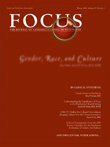Self-Help Treatment for Combined Addiction and Mental Illness
Abstract
New approaches to treating patients with combined mental illness and substance abuse continue to be developed. This rethinking of treatment is particularly important because of the acknowledged organizational barriers to effective management of persons with dual diagnoses and the excessive costs associated with their recidivism. This column describes a model for treatment that combines peer-led self-help from the addiction field with professional treatment from general psychiatry. This approach represents a paradigm shift from the way treatment is applied in the conventional mental health system in that patient peers assume many of the roles that are usually carried out by professionals, and these services are then integrated across levels of care. The model is based on a theoretically grounded perspective on behavioral change. We have evaluated its application in empirical studies in our system of acute inpatient, stepdown, and ambulatory units. This column should help convey how the self-help peer-led approach can be applied to bring about systems-level change in a variety of treatment settings where people with dual diagnoses are encountered, such as large hospital centers, smaller private programs, or multisite health maintenance organizations.



